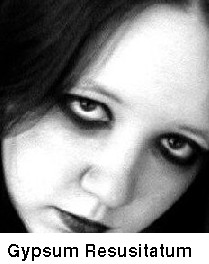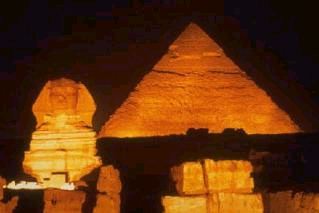QUILLER FOR HIRE: Short stories, blogs, poems, filmscripts, news articles, video & tramp journalism, by Bryan Adrian ... click this link
Vol. 1, 2006
JULY 2006




Free counters provided by Honesty.com.
The "WALKING DEAD [hydrophobic]," laced with Lead and Antimony and gypsum crystals; and, their rivals, the Polymer Clones with Fluorescent Dyed Hair [hydrophilic], who are constantly guzzling down gallons of poly-ethylene-glycol (PEG). It sure is sweet!




CRYSTAL PYRAMIDS [hydrophobic]
"... it is possible that the the template for our Earth in an unseen reality is crystalline in organization. Furthermore, this crystalline matrix seems to be similar to a geodesic dome--a series of triangular shapes fit together to form the skin of a sphere. The joining on the surface of the Earth at the apexes of these triangles are points of energy focus, the vortices of the Earth. They are called "ley lines."
At these foci, these formations are high mountains, hot springs, mineral deposits, sand spits, rock outcroppings, some dams are located on vortices, and often mineral deposits, especially gold, denote a vortex. There is a whole swirl of vortices around and near the Golden Gate Bridge, and these might be the coming together of several faults--many ley lines follow the great faults of our earth. Sacred temples of the ancient world around the Mediterranean are located at these powerful vortices, and drawing lines between them will bring out patterns of triangles. The Indians in the American Southwest as well as those in Peru and other parts of South America located their cities on vortices and ley lines, which look Like so many spokes and hubs. The Chinese practiced the ancient science of "geomancy" and "necromancy" ... The relative value of these matrices estimates Pi, but fails to ever be a function of Pi; doomed to never succeeding, for all time."

PEG is Poly(ethylene glycol) and is amazingly HYDROPHYLLIC. It is found in latex from rubber trees, milkweed, and typically prepared in the lab by anionic polymerization methods. It can interfere with and interact with cell fusion, so it is used in human bio-tech experiments. PEG is soluble in toluene and water, is sweet and viscous, and can bond as a super oxide with metals. PEG increases blood serum shelflife by tenfold or quite higher [its covalent attachment to proteins creates greatly enhanced serum lifetimes], and diminishes our immune system defenses in a fashion similar to AIDS. PEG is used in the synthesis of BIOPOLYMERS, the main helixes of cloned bio-life that hold the "lifeform" together. PEG can bond with high fructose corn syrup, and other oligosaccharides, especially in the presence of vanilla extract. For more CLICK HERE

ETHYLENE GLYCOL - can cause symptoms of anorexia if swallowed or inhaled; lymphcytosis; hematopoeitic dysfunction; increase in blood urea, nitrogen, and creatinine; severe metabolic acidosis; contains traces of formaldehyde; freezes at 9 degrees Farenheit. It explodes in the presence of a strong acid. ETHYLENE GLYCOL IS SWEET TASTING AND EXTREMELY TOXIC. It can easily put you into a coma.

PROPYLENE GLYCOL - a cousin of ethylene glycol. Also known as PROPANEDIOL, when it is fed in massive volumes to Livestock in their FEED. [this was made larger just for you Steve]
It is a major ingredient of both brake fluid and hydraulic fluid. Propylene glycol is used in mining for ore flotation, and as a major portion of anti-freeze engine coolant. It can cause fatal lactic acidosis and seizures. It swiftly redirects citric acid pathways in humans. It may explode in the heat of a fire and water may be totally ineffective against it.
SUGAR MIMICS: current research on "sugar mimics" and how they play a roll in diseases associated with N-linked glycoprotein and the synthesis of some glycosidase inhibitors. Pyranose sugars, furanose sugars, stereochemical substitutions, d-lactones, d-mannitol, and glycon-related analogues. CLICK HERE
click here for how SICKLE CELL SICKNESS protects us from MALARIAL PARASITIC MICROBES! It's all about glucose-6-phosphate dehydrogenase

"The Big Lie and Trick about INSULIN," will be the title of our next lecture and debate, following our first session here, and you most probably will never read about it in ABOUT.COM!
"Genetically modiified RHIZOBIUM will profit no one
and has the real potential for disrupting the entire earth eco-system" .... click here for GENETICALLY MODIFIED RHIZOBIUM BACTERIA ... argon lightning and legumes [beans] take on the lackies of genetic engineering, and beat them!
ARGUMENT/counterargument:
"E. Coli is regulated internally by its adenylate cyclase systems, which is in turn controlled by glucose consumption". Therefore, E. Coli uses the same fuel-energy system and compounds as cancerous tumor cells.
LIST OF TERMS [BELOW] FOR FUTURE DISCUSSIONS on ATP-pumps and ABC Protein pumps.
=====================>>>>>
ANTIMONY -- aka "stibnite", allegedly of the nitrogen family, is the only "metal" that EXPANDS, ON SOLIDIFYING, LIKE --->>>WATER.
It is thus used to expand and fill the small crevices of casting molds. Antimony, the "anti-friction alloy," is often alloyed with lead and tin, and used extensively in auto battery manufacturing, bullet making, and the paint industry as a pigment. The large pharmaceutical companies use it lavishly in anti-fungal medicines. Antimony poisoning resembles aresenic poisoning, in that it RADICALLY interferes with CELLULAR METABOLISM.
GLUGAGON -- a pancreatic hormone produced by the cells of the Islets of Langerhans which strongly opposes the action of glucose. It does, however, raise the level, ironically, of glucose in blood by breaking down GLYCOGEN.
Glucagon promotes the breakdown of proteins and promotes the rapid metabolism of fat.
A poorly understood stray version of glucagon, called GASTRO-INTESTINAL GLUCAGON, is secreted into the blood, from the intestines, whenever glucose is ingested. Its ONLY action seems to be to stimulate secretion of insulin. Glucagon comes chiefly today, in synthetic processes favored by global pharmaceutical industries, through SUGAR PROCESSING & REFINING. [recall, the intestine produces the largest number of hormones in the entire endocrine system, and that it also produces the same neuro-transmitters that are found in the brain. This hormonal link is the most mysterious connection that has baffled epilepsy researchers for decades, in that many neurotransmitters are also these same hormones].
GLYCOGEN -- a white, tasteless, polysaccharide, which occurs primarily in the liver and muscles. It is also found in some genuses of bacteria, fungi, and yeasts. It is an energy reservoir, broken down into glucose when needed.
GLYCOGENESIS DISEASE -- any group of enzymatic deficiencies resulting in altered glycogen metabolism. One type involves a deficiency of cyclic 3', 5' - AMP dependent kinase.
In some of these deficiences, GOUT is a symptom, which affects predominately males only, in their early teens, manifesting as muscular myopathy.
GLYCEROL -- belongs tentatively to the alcohol family, discovered while making soaps out of animal fats. Used in explosives and nitroglycerine. Added to iced cream by food industries, especially sherberts, shortening and margarines, and hand lotions. Blood serums use it in preservation, and it is a main ingredient in suppositories. It is also used in freezing red blood cells, and before the economic explosion of synthetics, was the main ingredient of automotive ANTI-FREEZE [like the Castor Oil from the castor "bean", before the eruption of millions of synthetics, supplied most of the fluid for the embalming industry [mortuaries]. Both are highly explosive.
GLYCINE -- the simplest of amino acids obtained from the hydrolysis of proteins. Mammals have absolutely no use nor need for this less than elementary amino acid, so it is classified as a "NON-ESSENTIAL" amino acid.
Throughout the months of March and April, we will bring you much more on this with an in-depth analysis.
FUTURE DISCUSSION GROUP TOPICS:
* Amber ("succinum"), or, electrum ("bitumin")?
* Manna, or, Mannan Oligosaccharide [MOS]? (mais non!)
* Bituminous fluids of the Dead Sea ("Asphaltites") and the Hartz Mountains
* "Misy", an oxidized pyrite, lead, antimony and divining rods
* Does ROCK SALT work better than CEMENTS for extracting all the silver and copper from gold ores?
* The "touchstone" of ancient alchemy ... to transform gold, what was it made of?
* Coral reef atolls ... why they grow only near atom bomb test regions [e.g. Bikini Atoll], or along the arc of a far flung concentric circle where giant meteorites have hit Earth [e.g. Australia's the Great Barrier Reef, and Belize's barrier reef, distanced from the comet-meteor craters of Central America in the same pattern as the Great Barrier reef and Austrailian meteor impacts ... likewise, the Icelandic volcanic mountain chains seem to grow around the Greenland meteor impact sites, but without the coral atolls, that we know of.]
How are fluorescent atolls, containing high concentrations of pigmentation that absorb abundant ultra-violet rays [UV radiation is ordinarily lethal to all sea life, especially turtles]. These FLUORESCENT ATOLLS, aka 'bleached' coral atolls, which voraciously reduce COMPLEX SUGARS for its ATP energy, how are they radically different from the much more ancient thorny and hard coral formations, that are smaller and much more individualistic, possessing a much larger calcium carbonate composition [and which don't use RAPACIOUS reduction processes on sugars for energy]? What is the difference, in what is indiscriminately labeled "limestone," for both types by scientists today, between these two very different types of coral formations [coral formations grow in the Artic Circle also, as well as Antartica, not only in warm waters]?
* Guanine nucleotides and bat guano ... any connections there?
* Epinephrine and nor-epinephrine, why are they ten times slower in AMP cycles than Forskohlii?
* Cell surfaces and glycoproteins and anti-freezing solutions. Are these reactions used in cryogenics?
* George Washington ... many historians have written about his deep attachment to his ceramics from China and Meissen, near Dresden, ... was the ceramic made from KAOLIN? Whey did Washington never ever buy black basalt nor jasper? [jasper and obsidian are glassy silicates that are soft and creamy and do not have piezoelectric nor optical properties like quartz, because they have no crystalline structure. Both come from volcanic lava; whereas kaolin, has a crystal structure, hexagramic, and is a clay].
* Mahattma Ghandi ... after working with military officers on the Zulu and Boer battlefields of South Africa, for over twenty years, before returning to India at the age of 46, why was one of his first acts to overthrow the machines of the Industrial Age, and to later try via the SALT ACT to overthrow the British monopoly on salt mining in India? [he even set an example to the millions of Indian low-castes and peasants by scooping up a bucket of seawater, setting it in the sun, and using the salt after the water evaporated, enough to supply his whole family with salt for weeks, on their food, setting a national trend, showing that the British mines were not important for human nutrition needs. Is this true, ... that our dietary salt requirements could be met by such simple and rudimentary chemistry?
TO WHOM CAN YOU ATTRIBUTE THE FOLLOWING QUOTES?:
(1) "The interaction of B-adrenergic agonists with the receptor Adenylate Cyclase Complex in nucleated erythrocytes causes accumulation of cellular cyclic 3',5'-AMP (2,5-7) which increases BI-DIRECTIONAL fluxes of SODIUM and potassium [salts] across the erythrocyte membrane"
(2) "The high potency of isoproterenol in stimulating accumulation of cyclic 3',5'-AMP and ion transport in intact cells, as well as in activating adenylate cyclase in plasma membranes, and the STEREO-SPECIFICITY of response to agonists as well as to antagonists, make it apparent that the receptor in plasma membrane displays a high affinity to the STEREO-SPECIFIC sites."
(3) "I found the ideal growth medium for Saccharomyces Yeasts and Chromium Yeasts includes a nutrient broth made up of Pasteur's Salt solution, undiluted, full strength, including copper, selenium, chromium, molybdenum, nickle, tin and boron. This medium is considerably frothy and foaming, like a rabid dog's mouth!"
(4) "One mode of action for mannan-based oligosaccharides involves the interference with colonization of intestinal microbes. Cell surface carbohydrates are primarily responsible for cell recognition. At the simplest level is the critical role of carbohydrates in blood types which are differentiated by CELL COAT SUGARS. Bacteria have lectins on the cell surface that recognize specific sugars and allow the cell to attach to that sugar. These sugars can be found on the epithelial cell surface. The binding properties of Salmonella, Escherichia coli and Vibrio Cholera has been shown to be mediated by a mannose-specific LECTIN-LIKE substance on the bacterial cell surface. Mannan Oligosaccharide [MOS] comes from the cell wall of Saccharomyces cerevisiae, which often contains high levels of chromium, a substance toxic to mammals. Pasteurization of the S. Ceres yeast after fermentation causes a natural chelating [of metals] effect yielding high quality and pure chromium. S. Ceres, more a yeast-like micro-entity than a mating yeast, also contains high levels of selenium, which can be chelated out via Pasteurization, after fermentation, ... but the sodium selenite resulting is a deadly carcinogen to mammals, and a powerhouse generator of toxic free radicals ready for oxidation [there is indeed a mutant microorganism named CHROMATIUM, that actually consumes chromium as its chief nutrient]."
[Pasteur is the father of polarized and stereoscopic molecular chemistry, and worked much with Rhizobium. Don't forget the main difference between organic polymers and synthetic polymers -- biological polymers are bio-degradable, whereas syntheic polymers have a MIRROR-IMAGE molecular chain that RADICALLY INHIBITS bio-degradation].
(5) "We determined the 3-D solution structures of oligonucleotides with non-natural elements. Structural variants studied so far are OLIGONUCLEOTIDES with PYRANOSE-SUGARS linked by phospho-diester backbones. These NON-NATURAL oligonucleotides exhibit new and highly interesting tendencies and 3-D structures. We then studied the 3D solution structures of OLIGOPEPTIDES made from NON-NATURAL beta- and gamma- amino acids. These beta- and gamma- peptides with only 6 to 7 amino acids will form stable SECONDARY structures in METHANOL, albeit with quite a few HYDROPHOBIC SIDECHAINS."
(6) ... [this is the most difficult quote to attribute]
"There are essentially six kinds of mountain springs. The salty, which indicates salt; the nitrous, which indicates soda; the aluminous, which indicates alum; the vitrioline, which indicates vitriol; the sulphurous kind, indicating sulphur; and, the bituminous juices, indicating bitumin. The particles of metals are rarely carried into the marshes, which are generally in level and open places near a river."
GOOD LUCK STUDENTS!
FURTHER NOTES:
Zildjian Cymbals
Cymbals: History, please scroll down ...
THOMPSON, UTAH.-D.-R. 528.1 mi.; D.-M. 353 mi.; pop. (prec.) 113; elev. 5,160. Grand County. An oasis on the desert, Thompson first came into existence because of the springs which were chief source of water for early-day travelers. A supply and shipping point for sheep owners in the region, Thompson is the rail gateway to MOAB, county seat of Grand County, 32 miles to the southeast on the Colorado River. MOAB was established as a Mormon colony during the period of heavy Mormon migration to Salt Lake City in the years immediately following Brigham Young's dramatic arrival in 1847. Between Thompson and Moab is Arches National Monument. The "window section" of this fascinating area includes 144 arches, or natural "windows" ranging in size from peepholes in the rock walls to great openings 153 feet in height. Thompson as the rail gateway and Moab as the highway gateway, are destined for future prominence as improved highways lead travelers into southeastern Utah.
http://www.ghostdepot.com/rg/guide%20book/utahrt.htm
Chief industry is mining of Utah rock asphalt, a perfect natural paving mixture of bituminous sandstone containing about 90 per cent siliceous material in saturated combination with approximately 10 per cent of pure natural asphalt.
Great quantities of ozocerite waxes are mined in surrounding mountains, and are shipped from Heber. Heber City was first settled in 1859 by a group of English Mormon immigrants.
Zietrisikite
Zietrisikite is a mineral wax, vert, similar to ozocerite. It is found at Zietrisika, Moldavia, hence
its name.
Ziega
(Zie"ga) n. Curd produced from milk by adding acetic acid, after RENNET has ceased to cause coagulation. Brande & C.
Zietrisikite
(Zie`tri*si"kite) n. (Min.) A mineral wax, vert similar to ozocerite. It is found at Zietrisika, Moldavia, whence its name.
Zinc
(Zinc) n. [G. zink, probably akin to zinn tin: cf. F. zinc, from the German. Cf. Tin ] (Chem.) An abundant element of the magnesium-cadmium group, extracted principally from the minerals zinc blende, smithsonite, calamine, and franklinite, as an easily fusible bluish white metal, which is malleable, especially when heated. It is not easily oxidized in moist air, and hence is used for sheeting, coating galvanized iron, etc. It is used in making brass, britannia, and other alloys, and is also largely consumed in electric batteries. Symbol Zn. Atomic weight 64.9. [Formerly written also zink.]
Butter of zinc (Old Chem.), zinc chloride, ZnCl2, a deliquescent white waxy or oily substance. — Oxide of zinc. (Chem.) See Zinc oxide, below. — Zinc amine (Chem.), a white amorphous substance, Zn(NH2)2, obtained by the action of ammonia on zinc ethyl; — called also zinc amide. — Zinc amyle (Chem.), a colorless, transparent liquid, composed of zinc and amyle, which, when exposed to the atmosphere, emits fumes, and absorbs oxygen with rapidity. — Zinc blende [cf. G. zinkblende] (Min.), a native zinc sulphide. See Blende <156.html>, n. (a). — Zinc bloom [cf. G. zinkblumen flowers of zinc, oxide of zinc] (Min.), hydrous carbonate of zinc, usually occurring in white earthy incrustations; — called also hydrozincite. — Zinc ethyl (Chem.), a colorless, transparent, poisonous liquid, composed of zinc and ethyl, which takes fire spontaneously on exposure to the atmosphere. — Zinc green, a green pigment consisting of zinc and cobalt oxides; — called also Rinmann's green. — Zinc methyl (Chem.), a colorless mobile liquid Zn(CH3)2, produced by the action of methyl iodide on a zinc sodium alloy. It has a disagreeable odor, and is spontaneously inflammable in the air.
It has been of great importance in the synthesis of organic compounds, and is the type of a large series of similar compounds, as zinc ethyl, zinc amyle, etc. — Zinc oxide (Chem.), the oxide of zinc, ZnO, forming a light fluffy sublimate when zinc is burned; — called also flowers of zinc, philosopher's wool, nihil album, etc. The impure oxide produced by burning the metal, roasting its ores, or in melting brass, is called also pompholyx, and tutty. — Zinc spinel (Min.), a mineral, related to spinel, consisting essentially of the oxides of zinc and aluminium; gahnite. — Zinc vitriol (Chem.), zinc sulphate. See White vitriol, under Vitriol — Zinc white, a white powder consisting of zinc oxide, used as a pigment.
Beeswax is an inert material with high plasticity at a relatively low temperature (around 32 0C). By contrast, at this temperature most plant waxes are much harder and of crystalline structure. Beeswax is also insoluble in water and resistant to many acids, but is soluble in most organic solvents such as ether, benzine, benzol, chloroform, turpentine oil and after warming, in alcohol and fatty oils.
Ghedda waxes from the Asian honeybee species are described as softer and more plastic, but do not have a significantly different melting point (Warth, 1956). The melting point of wax from three Meliponid (stingless bee) species ranged between 64.6 and 66.5 0C (Smith, 1951 and Phadke et al., 1969). Bumble bee wax has a much lower melting point at 30-400C and bumble bees therefore mix their wax with pollen in order to improve its structural strength (Alford, 1975). Other insect waxes are normally used for protective body coatings, rather than for structural purposes. They are therefore very different in their composition as well as their physical characteristics and they have much higher melting points.
The composition of beeswax
Pure beeswax from Apis mellifera consists of at least 284 different compounds. Not all have been completely identified but over 111 are volatile (Tulloch, 1980). The major compounds are hydroxy polyesters, saturated and unsaturated monoesters, and free acids .
Various plant growth promoting substances, such as myricil alcohol (Weng et al., N-1979), have been detected in and isolated from beeswax. The propolis of the hive comes from plants also.
WARNING: If BEESWAX is mixed with medicinal drugs or poisonous baits, wax preserves the active materials longer and releases them slowly. It can be used to create thin non-corrosive, non-allergenic protective films on many surfaces from metals to fruits and human skin. Thus it protects against external damage such as corrosion and abrasion as well as against moisture loss.
BEESWAX is a good ELECTRIC insulator and, when saponified with borax, allows the mixture of very stable and smooth emulsions for cosmetics. Even in small concentrations it improves other formulations in the same way.
A very small anti-inflammatory and antioxidant activity can be observed in beeswax due possibly to some inclusions of propolis produced by plants.
metal castings and modelling
Because of its plasticity, beeswax is easily formed and carved. It maintains its shape well even over very long periods of time as proven by wax sculptures found in ancient Egyptian graves. Its relatively low melting point permits easy and complete removal from casting moulds. The hollow space left in these moulds can then be filled with molten metal. Already in ancient times whether in Asia, the Americas or Europe, craftsmen using this V lost wax method, sculpted small, solid metal figures, jewellery, large hollow sculptures and more recently also bells. Until today, different mixtures of beeswax and other waxes are used to create special forms and surfaces for jewellery and artistic sculptures.
By Hugo Pinksterboer.
The Cymbal Book is the first book of its kind. It details the 5000-year history and development of these fascinating instruments. Based on visits to all the major cymbal manufacturing companies and interviews with the world's leading drummers, journalist and drummer Hugo Pinksterboer has created a well-documented and readable book, featuring over 200 photos and a 16-page color photo section. It covers topics such as selection and testing, acoustics, ideas for set-ups, cleaning, and repair, and much, much more. Whether read for enjoyment or used as a specific reference guide, The Cymbal Book will answer every question on this subject.
"There are even cymbals mentioned in the Bible."
Colin Schofield is a vice president of the Avedis Zildjian Company -- the world's leading maker of cymbals. Originally, cymbals were an instrument of war. Soldiers would crash them together to try to intimidate the enemy during battles. Smaller cymbals were also played in religious settings.
"There were two centers of cymbal-making in the world, one was in China. Chinese cymbals, uh, go back to really ancient, ancient times, and these were cymbals that actually would have a very unique design that would have a, a large bell that was somewhat knob-shaped, how they actually held the cymbals. They're mainly used as, uh, finger cymbals in, in various religious ceremonies."
The other center of cymbal-making was Armenia -- that's Armenian military music we're listening to in the background.
There were a number of cymbal-makers in Armenia -- amongst them a man who discovered a secret process for making his cymbals sound better.
"And his cymbals were far more musical, had much greater projection and power and greater durability."
Well, the Sultan himself took notice.
"He actually gave them the name Zildjian, which is essentially a, like a guildsman's name. It means cymbal smith. And that's where the Zildjian name came from. It was bestowed upon them by the, the Sultan in Turkey at that time."
The Avedis Zildjian family is still in the cymbal business, making more than half the cymbals sold worldwide at a factory in the Boston-Armenian quarter.

atp, adp, amp, insulin, liver, blood, muscle tissue, gout, glycogenesis disease, glycine, silk fibroin, insulin, myopathy, enzymatic suppressors, handlotions, antifreeze, anti-freeze, hydrolysis, chromium yeast, cloning, sucrase, maltase, s. ceres, hormones, disaccharides, intestinal mucous, hydrolysis, intestinal membrane, ABC, adenosine triphosphate binding cassette, ABC protein pumps, alkaloids, encoding, ADARs, adenosine deaminases acting on RNA, ATP-driven nanobots, ATP pumps, myosin, spores, DNA dependent ATPs, chromium heightened glucose tolerance, short circuit currents, rabbit guts, Ashkelon, chromium, cow rumens, cell death macromolecules Glucagon, glycogen, "special" gastrointestinal glucagon, glycerol main ingredient of automotive antifreeze solution, chromium yeasts same as baker's yeast and Saccharomyces Ceres yeast; "misy"; GE Rhizobium bacteria








